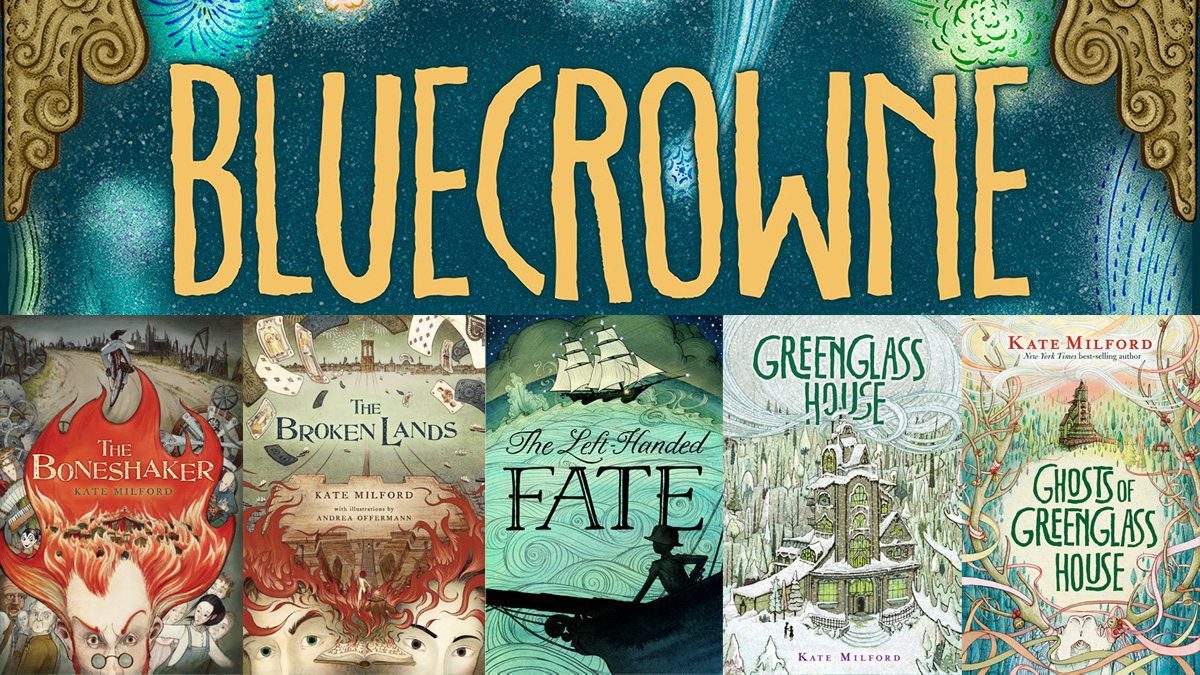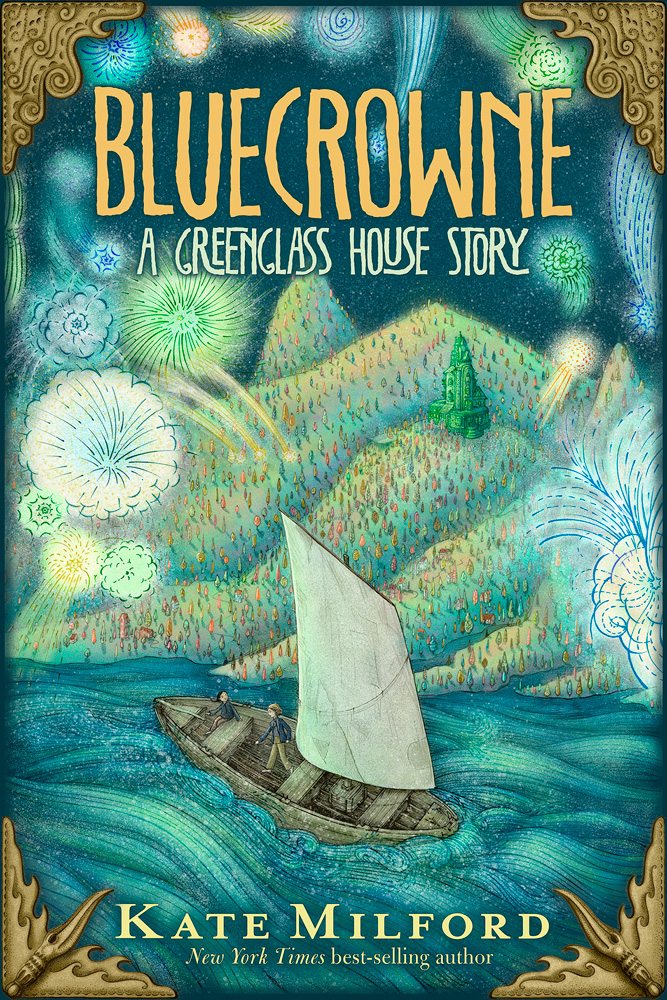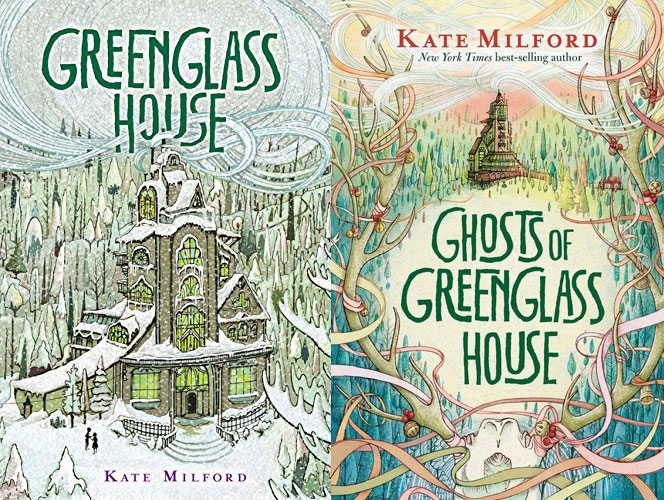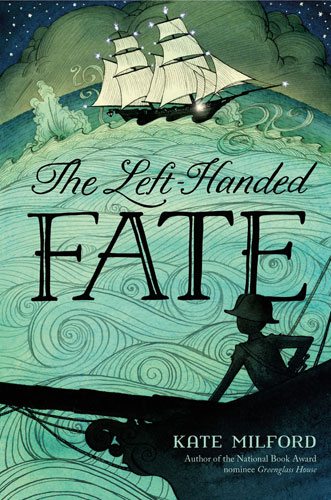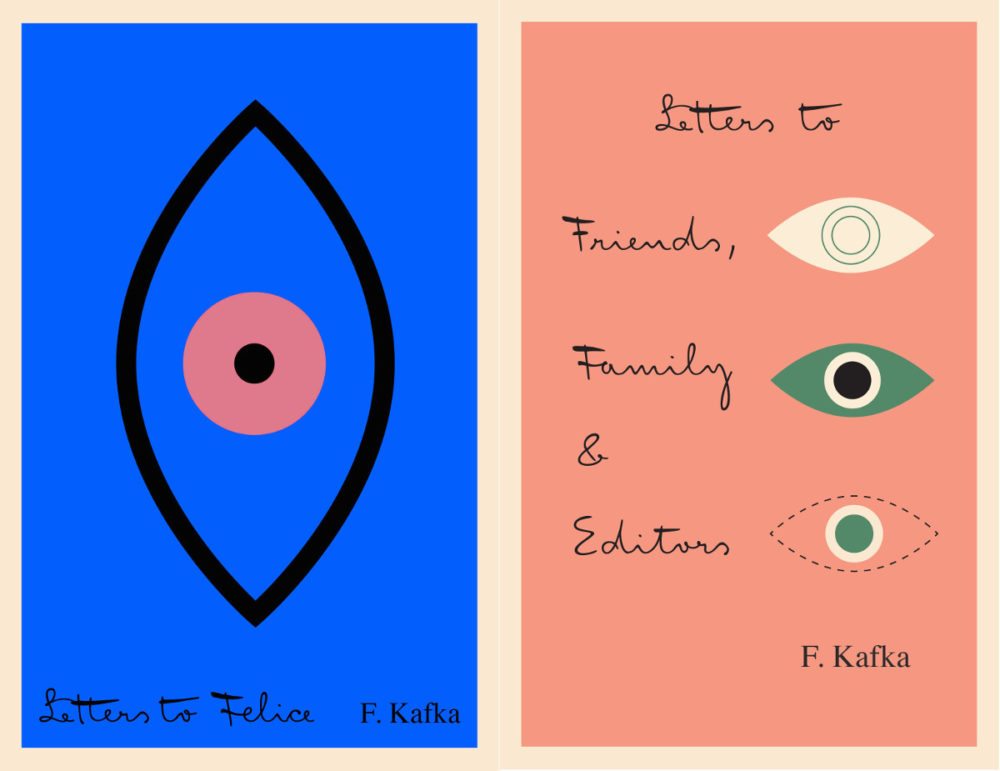This week’s Stack Overflow is a dive into the world of Kate Milford’s books. I only started reading her books in late 2016, and her Greenglass House series became some of the favorite books I read in 2017. Today, I’m happy to reveal the cover of her upcoming book, Bluecrowne, as well as announce a few more books that will be coming later!
First up: Bluecrowne: A Greenglass House Story will be published in October this year. It’s an updated version of a story that Milford self-published through a Kickstarter campaign a few years ago, freshly revised and updated (including a new character) and featuring illustrations by Nicole Wong. According to the Kickstarter page, this story links together the world of Arcane (from The Boneshaker and The Broken Lands) and the world of the Greenglass House novels. Feast your eyes on this gorgeous cover!
Following Bluecrowne, in the fall of 2019 we can also expect a (not yet titled) book about Marzana, one of the carolers from Ghosts of Greenglass House, with illustrations by Jaime Zollars. Then in spring of 2020, we’ll get The Raconteur’s Commonplace Book, the collection of stories that’s often referred to in the Greenglass House books, also illustrated by Nicole Wong. And then, finally, in fall of 2020, Milford will publish a stand-alone novel, Rialto. All of the books will be published by Clarion Books, an imprint of Houghton Mifflin Harcourt Books for Young Readers.
I’ve described the Greenglass House books in a previous Stack Overflow, but here’s a quick summary in case you missed it: Greenglass House is an inn that used to be a smuggler’s house, set in the seaside town of Nagspeake. The proprietors are on good terms with various smugglers who still visit the inn as they pass through Nagspeake. Both of the books take place during the winter, and involve unexpected guests showing up and bringing mysteries with them, while Milo (the son of the proprietors) investigates with his friend Meddy.
The Left-Handed Fate is actually the first book of Kate Milford’s that I read, though it was actually published between the two Greenglass House books. (You can read my take on it here.) It’s set in the same world, but takes place much earlier, and focuses on Lucy Bluecrowne, the daughter of a privateer. When I started Greenglass House I didn’t actually know the books would be connected, and it was fun to discover the various characters and places that tie the books together.
Lately I’ve been reading The Boneshaker and its prequel The Broken Lands. The Boneshaker takes place in turn-of-the-century midwestern America, where a small town called Arcane is visited by a strange traveling medicine show. It reminded me a little of Ray Bradbury, particularly Something Wicked This Way Comes, with the creepy carnival and some otherworldly powers at work. A young girl named Natalie is at the center of it, uncovering the secrets behind Doctor Jake Limberleg, old Tom Guyot, and various other strange characters that populate the book. As with Milford’s other novels, this one is full of stories—Natalie’s mother is a storyteller and Natalie has inherited that, but several other characters tell stories as well.
I haven’t finished The Broken Lands yet, but it takes place much earlier, at a time when the Brooklyn Bridge is under construction. Much of the plot takes place on Coney Island, and once again there’s a sense of creepiness and some supernatural characters with their machinations. I’m already seeing a few overlaps between it and The Boneshaker but I don’t know where all the connections will be. I’m excited to see where this one goes!
I had the opportunity to interview Kate Milford via email about her books, both published and upcoming.
Jonathan Liu: I loved exploring the world of Greenglass House, but I actually read the books in the wrong order. I’d read The Left-Handed Fate first, and then only discovered the two Greenglass House books later, and was delighted by the connections between the present-day story and the past. I always wonder how much the writer has planned out in advance: When you wrote Greenglass House, did you already have some of Lucy Bluecrowne’s story mapped out? Or did you find yourself restricted by the things you wrote in Greenglass House and have to fit some of her story to what was already recorded?
Kate Milford: In that particular case, it was a little bit of both, because I was writing and revising those two books plus Bluecrowne all at more or less the same time, but the connections really weren’t planned out at the time I sold Greenglass and The Left-Handed Fate. I mean, I knew they were sharing a world, and since both take place at least in part in Nagspeake, I probably in the back of my head knew there would be connections, but the really specific stuff entered the books during the drafting. Greenglass House was written first, turned in (I think) in October of 2012; then The Left-Handed Fate was turned in the following March or May. I was revising Greenglass House at basically the same I was writing the previous version of Bluecrowne, over the summer of 2013, so that’s when the very direct connections between those books happened. Then I retrofitted The Left-Handed Fate so that it was in agreement with the other two. Neither Greenglass House nor Bluecrowne were outlined in advance, so I had this wonderful fun of discovering all those elements that tied the books together as I was doing the writing, which is my favorite way to work (when I have the time). But when you sense the ties between The Left-Handed Fate and the Greenglass House books, what you’re really feeling is Bluecrowne.
Generally, though, yes, I am always butting up against constraints from previous books when I want to tie new ones back to them. I kind of like that, though–I find ways to work around them or work them in, and it makes drafting feel like solving a puzzle. Plus I’m also always finding places where I can draw something from a previous book into a new one, and it works in ways I didn’t anticipate when writing the earlier story. An example of that is Milo/Tengfei’s box from the attic in Ghosts of Greenglass House. That box was written into Bluecrowne a good two years before I had even the vaguest notion I’d be coming back to Greenglass House for a sequel. And the Liberty of Gammerbund, which plays a part in The Left-Handed Fate, is also very important in Ghosts of Greenglass House, as well as being the primary setting for the book I’m working on now, neither of which were planned.
I think maybe this happens for two reasons. Some of the stuff I put into books is stuff I’m so interested in that my desire to think and write about it doesn’t go away after just one book. But the bigger thing is that since I’m kind of obsessed with places and folklore, and because I know Nagspeake in particular so well, it feels comfortable and right to reference things that might exist and be referenced by characters in that world (like specific smugglers, or the Liberty of Gammerbund, or in-world literature like The Raconteur’s Commonplace Book or Aunt Lucy’s Counterpane Book). And nothing becomes a cultural touchstone in a world without there being a bigger story to it, so I know those things probably have bigger stories, too. And then they’re there when I’m ready for them. Like Violet Cross–she’s mentioned in Greenglass House as part of a list of famous smugglers, but not much else was said about her. I certainly had no idea at the time that she’d become so important in another book, but when it was time, there she was, just waiting to be fleshed out.
Liu: One of the things I really loved about the Greenglass House books is the way you write about Milo’s struggle to fit in as a Chinese kid growing up with white parents in a non-Chinese community. I know you’ve written about using sensitivity readers while writing these books, and that it was tied to your own process of international adoption. Is that process still ongoing? I would love to know how the research and thought you put into the writing has shaped you and informed you as a parent of an adoptee (but I wasn’t sure if you’re still awaiting the adoption). How has it been received by readers—what sort of response have you gotten from kids who are adopted, or just growing up in communities that are largely not like themselves?
Milford: This is a little bit of an emotional question at the moment–I’m trying to decide how much I really want to get into it. In the time that we’ve been logged in and waiting for our match, the wait in the traditional China program has extended to the point where we were told last year by our agency that they recommended changing to a different program. This is happening for good reasons, among which are the end of the One Child policy and sincere efforts on the part of the Chinese government to challenge the negative perceptions of girls as lesser members of society, as well as encouraging domestic adoption in China. Meanwhile, as we’ve been waiting for our match, we’ve had two successful pregnancies. It’s hard to let go, considering how long we’ve been envisioning bringing our child home, but at this point we don’t feel that we can stand in the way of parents who still have years of waiting ahead of them before they meet their first child. It hurts to let go of a child we’ve been waiting for and imagining for so long, but that’s nothing compared to how it must feel for parents who are still waiting to begin their families.
Both my husband and I feel, though, that we’re better parents for having gone through the process. I can remember when we first sat down to write our family narrative, which involved us really discussing in-depth our feelings about all sorts of things that I think, if we hadn’t had to put them into words for our dossier, we might not have discussed before we had children: how we’d discuss religion, our approach to discipline and division of labor and how we’d involve our extended families, all sorts of things. There’s plenty we still have to figure out on the fly, but we definitely felt like we were on the same page and we knew what our resources were. It’s been helpful as we’ve navigated our son’s entry into school, too, because part of the homestudy process helps to prepare parents for transitional challenges.
I’ve been honored to have received a lot of emails from adult adoptees and parents whose families included adoption. I’ve heard from adults who had Milo’s same fear that if they told their parents about how curious they were about their birth families, their parents would be hurt. I’ve heard from parents who read the book first and were looking forward to sharing it with their children. I make sure to explain Milo’s guilt about wondering about his birth family every time I speak to schools because after one of my first visits, a girl came up to me afterward, flanked by two friends for support, and told me that she thought what I had said about that guilt was true. I don’t know if she had spoken to her own parents about her curiosity that at that point, but I got the feeling she hadn’t. I hope she did. This, by the way, is why I believe sensitivity readers are so important. I have a better chance of having a young reader see him- or herself in my stories if I use every resource at my disposal, and although I think I’m pretty good at research and empathy in general, nothing can stand in for personal experience. The three adoptee sensitivity readers who read Ghosts for me are also mentors for younger kids, many of them Milo’s age. This made both their constructive criticism where I needed it and their praise where I earned it extra special, because they were thinking not only about whether the book felt true to their experiences, but also how to make it speak more fully to their mentees and other kids like them.
Liu: I’ve been recommending Greenglass House to my friends, including a few kids I know who were also adopted from China. Even though I’m not adopted myself, I still found myself relating to some of Milo’s emotions about growing up Chinese in a community that was mostly white.
It was a lovely surprise to see how the role-playing game, Odd Trails, becomes a tool for Milo and Meddy to investigate these mysteries. What’s your own background with role-playing games? Did you base Odd Trails (and the various classes and creatures) on any games in particular, or did you make that up? Follow-up question: so, when are we going to see an Odd Trails RPG that fans can play?
Milford: Before I started writing Greenglass House, my experiences with RPGs was pretty much limited to the time I tried to play with my older cousins one year on a family beach vacation and basically they tolerated my presence in the room only with great effort (I think I was about 10 and they were all fourteen or so). I didn’t get to play a proper game until after I married my husband, who was a former Dungeon Master. I like to play rogues, because I am not sufficiently rogue-like in real life (though I absolutely can pick locks).
Odd Trails is inspired mostly by Dungeons and Dragons, because that’s what I’d played at that point; I took a few things from my shared book world and a few things I made up for the sake of the game and mapped them onto D&D character classes, and I used similar formatting for descriptions of things like exploits and magic items and so forth. My goal was to skate close enough to recognizable RPG structure that kids who were interested would feel like they were stepping in to somewhat familiar territory if they were inspired by Meddy and Milo to try playing for themselves. And as for seeing an Odd Trails RPG: I have… thoughts. A couple potential storylines. And a couple game-designer friends that I’m hoping can be recruited to the cause. We shall see.
Liu: Ooooh, that’s definitely something I’ll be paying attention for!
Not to box you in, but what genre would you call your books? I love that there are fantastical elements, but for the most part they’re not traditional fantasy books, either.
Milford: It’s funny, because I definitely think of them as fantasy, but I see what you mean. I was asked last year whether I consider the world of these books to be an alternate world, and I had to think about it because I don’t, really–I think of it as our world, if the weirdness and oddball places and people and history in our world were dialed up to 11 and really possessed the magic you imagine they could. It’s not magic realism, because that’s its own thing… I like the word “fabulist” because it evokes the creation of fables (but I don’t like how it’s been used by people who feel like they have to differentiate between genre fiction and “stuff that’s non-realistic but also good, unlike that escapist fluff in the sci-fi/fantasy section”)… I don’t know. I think of myself as a fantasy author. Sometimes historical, sometimes mystery, but always fantasy.
Liu: I really like that word, “fabulist,” and I can definitely see how it fits your stories—the way that fables and folklore play an important role in the books.
That’s why I’m also very excited about The Raconteur’s Commonplace Book, because one of the things I loved about both of the Greenglass House books is the way that there are stories within the story. Do you take extra effort to try writing in different voices when you’re crafting these stories? Do you start with the “clues” that you want Milo and Meddy to find in the stories and then create a tale around those, or do you start with the story and then weave in clues afterward?
Milford: I’m glad you’re excited! I’m having a wonderful time working on it. I had planned to do it as another Kickstarter book, so I’m delighted that Clarion has volunteered to do all the hard work and I just have to write it. And it has a triple story-within-the-story element to it: there’s the story of the guests in the inn, the stories they tell while they’re there, and a story that interweaves itself through those stories that readers of Bluecrowne and The Kairos Mechanism (my first Kickstarter book) will pick up on. Writing it has been like putting a puzzle together, but it’s a lot of fun for me. Hopefully for the reader, too.
I do like to have storytelling within my books, in part because (again) I love folklore, and in part because I love all the ways in which storytelling shapes both the teller and the listener. (And, as a practical matter, having a story I can pull out of the text and tell when I visit schools or bookstores is very, very handy, especially when there have been technical difficulties with my slide presentations.) I do try to change the voice when I write those stories, which is always a bit of a challenge, because I almost always start off with just writing the story out in my own sort of storytelling voice just to get it on the page, and then I go back and layer in the personality of the teller and breaks for the listeners to react and all those elements.
Sometimes I know right away why I’m writing a particular story in, and sometimes I don’t at first. Sometimes writing the tale is my way to figure out the character who’s telling it. I can remember when I wrote the “Only a Fool Scoffs at Destiny” story from Greenglass House. I was on vacation in North Carolina, and I liked to go for evening runs along a stretch of road very much like the one described in the story: dunes and ocean to the east, gnarly shrubs to the west, not a lot of light overhead other than stars. I came home with that story, but I wasn’t initially sure what purpose it would serve. I do a lot of writing like that–not sure what it’s for, but pretty sure it’s got a place in the story. I figure it out along with the characters sometimes, which is always fun. On the other hand, sometimes I do know what I’m doing in the moment. I knew Milo’s kite story in Ghosts had to accomplish very specific objectives, so I gave him exactly what he needed to do that and no more, because Milo wouldn’t have been comfortable immersing himself in the story the way, for instance, Mr. Hakelbarend does when he tells his tale in the same book. Same thing with Georgie’s “The Otter and the Eye” story in Greenglass House. That one had objectives, and given the situation and Georgie’s emotional state, her storytelling voice was very specific right from the beginning.
Raconteur’s is particularly fun for me because–and this goes back to your question above about whether choices I make in one book wind up painting me into corners in another one–I had pieces of different stories written and referenced in Greenglass House, and other pieces written and referenced in Ghosts, and still other pieces written and referenced in a book that hasn’t seen light of day yet. I’ve referenced it on the Nagspeake website here and there. I know what the deeper story needs to accomplish, because that story relates to events in The Kairos Mechanism and Bluecrowne. And there are connections to the book that follows it, Rialto. So there are all of these moving parts I’m juggling, and all of these different voices telling the tales. It is So. Much. Fun. It’s a hot mess right now, but I’m on deadline for Marzana’s book at the moment, so I don’t have to worry about Raconteur’s for (checking my watch) two more months.
Liu: Speaking of Marzana—who was one of the carolers that shows up in Ghosts of Greenglass House—I loved the various rituals and traditions: the things you’re supposed to say, the chimney sweep, the importance of stepping into the home with the right foot, the hobby horse, and all of that. Were those traditions things that you made up entirely, or were they inspired by some particular traditions?
Milford: I’m so glad you enjoyed that. Winter is my favorite season, Christmas is my favorite holiday, and I love old weird lore, which there is SO MUCH OF in the canon of seasonal traditions. The Waits and their traditions were my favorite part of Ghosts of Greenglass House. I made up shockingly little for them; most of their traditions were inspired in some way by European Christmas and Solstice traditions, just adapted and tweaked to give them a Nagspeake-y sort of twist. The traditions of the sweep, the first footer, St. Barbara’s branch, St. Lucia’s candle crown–those are all real things. The Hobby Horse is inspired by real traditions, as is Mr. Larven’s mask, Sylvester’s hair, bells, and face paint… everyone’s costumes, really. Ordinarily I wouldn’t give characters names that are quite this on-the-nose, but all the Waits’ names, first and last, are taken from traditional seasonal characters, too. I did make up the specific call and response inviting the Waits in, but there are plenty of examples of that kind of thing in the traditions of the season, where one can open one’s home to someone or something and in exchange for the hospitality (or lack of it) receive good fortune or bad for the coming year. And, of course, if you’ve read The Dark Is Rising, which is one of my all-time favorite books and which also references a bunch of midwinter folklore, you can spot a few homages in Ghosts. The use by the Waits of “Good King Wenceslas” is one.
I really like the idea of uncertainty, which was why some of my earlier books make such heavy references to crossroads lore. But midwinter is another time of uncertainty. Historically much of the celebration was really about that: uncertainty about surviving the winter, and uncertainty about what was coming in the new year. Hence the traditions focusing on hospitality, sacrifice, shoring up the goodwill of the natural world and the uncanny spirits who might intervene on your behalf, and interpreting the signs that would tell you whether the coming year would be kind or not. And while I love my cozy Christmas traditions–I grew up in a family that took Christmas celebrations very seriously, much to my delight both as a child and an adult–I really love the wildness and the chaotic nature of some of the lore of the season. And in the Greenglass House books, I didn’t want the winter to be the bad guy. That’s my enduring problem with some of my favorite winter fantasy: that the snow has to be defeated before good can triumph. And I get why–it all goes back to that basic human need to survive the winter and the cold and the hunger of a time when very little grows. But I love snow and I love the winter, so I wanted my winter fantasy to have all the chaos and weirdness, but I wanted the winter in it to be sort of chaotic neutral, rather than something to be overcome. I think to some degree, the Waits were my way of personifying my idea of winter and all its beautiful chaos and letting it walk right in the front door.
Liu: Last question: the last book that was announced is a stand-alone novel called Rialto. Can we get any hints what that one is about?
Milford: Rialto has been kicking around my brain for a handful of years now. In many ways it’s very personal, and it’s the one I’m both most excited about and also most scared about. It’s set in the same shared world, but we’re back in the midwestern United States, in a town that’s home to a defunct amusement park and several other assorted marvels. It has mystery elements and fantasy elements, and a family recovering from trauma. I think it’s a book about siblings and love and seeking out the wondrous. But I’ll have to write the thing before I’m totally sure.
